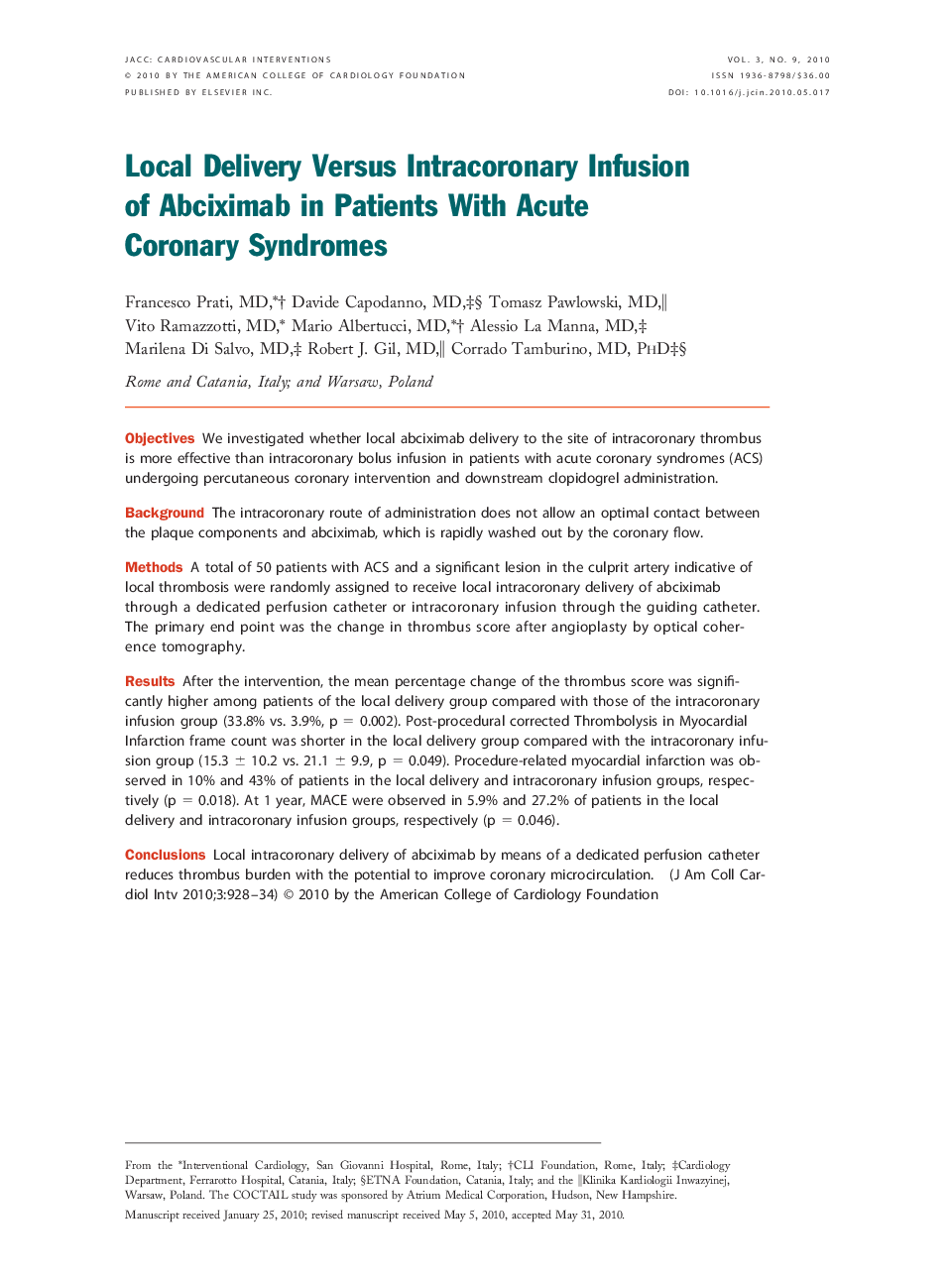| Article ID | Journal | Published Year | Pages | File Type |
|---|---|---|---|---|
| 2941738 | JACC: Cardiovascular Interventions | 2010 | 7 Pages |
ObjectivesWe investigated whether local abciximab delivery to the site of intracoronary thrombus is more effective than intracoronary bolus infusion in patients with acute coronary syndromes (ACS) undergoing percutaneous coronary intervention and downstream clopidogrel administration.BackgroundThe intracoronary route of administration does not allow an optimal contact between the plaque components and abciximab, which is rapidly washed out by the coronary flow.MethodsA total of 50 patients with ACS and a significant lesion in the culprit artery indicative of local thrombosis were randomly assigned to receive local intracoronary delivery of abciximab through a dedicated perfusion catheter or intracoronary infusion through the guiding catheter. The primary end point was the change in thrombus score after angioplasty by optical coherence tomography.ResultsAfter the intervention, the mean percentage change of the thrombus score was significantly higher among patients of the local delivery group compared with those of the intracoronary infusion group (33.8% vs. 3.9%, p = 0.002). Post-procedural corrected Thrombolysis in Myocardial Infarction frame count was shorter in the local delivery group compared with the intracoronary infusion group (15.3 ± 10.2 vs. 21.1 ± 9.9, p = 0.049). Procedure-related myocardial infarction was observed in 10% and 43% of patients in the local delivery and intracoronary infusion groups, respectively (p = 0.018). At 1 year, MACE were observed in 5.9% and 27.2% of patients in the local delivery and intracoronary infusion groups, respectively (p = 0.046).ConclusionsLocal intracoronary delivery of abciximab by means of a dedicated perfusion catheter reduces thrombus burden with the potential to improve coronary microcirculation.
